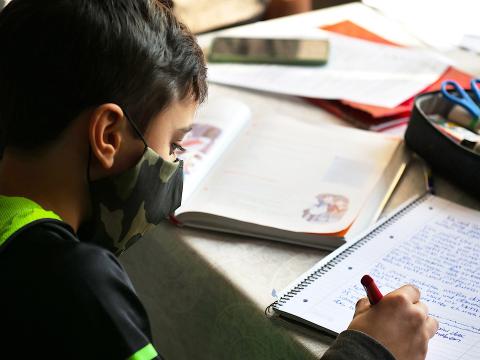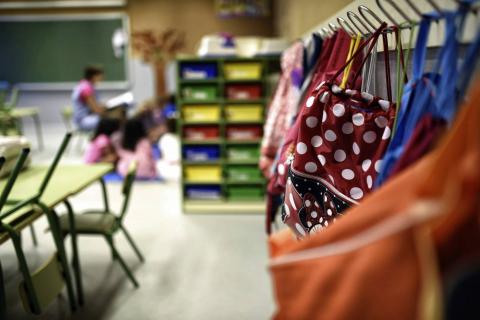Reactions: Study says smaller classrooms do not improve grades for children from low-income families
Smaller classroom sizes in schools are failing to increase the resilience of children from low-income families, according to a study published in the International Journal of Science Education. Data from more than 2,700 disadvantaged secondary school students in Japan and China show that minimising class sizes does not lead to better grades. The authors of the study claim that reducing classroom size may even decrease the likelihood of children achieving the best results.

Cynthia Martínez - ratios educación
Cynthia Martínez Garrido
Professor of Research Methods in Education at the Autonomous University of Madrid
Classroom ratios, particularly in classrooms where students from disadvantaged backgrounds are concentrated, are a bone of contention between teachers and the administration. On the one hand, professionals argue the need for a reduction in the ratio in order to be able to provide more personalised attention. On the other hand, the administration makes its calculations so that the numbers and budgets come out on top of everything, even the development of those most in need.
The study concludes that the ratio 'does not matter'. And it is necessary to be very cautious about this false headline. Let's look at it:
For the authors, the ratio does not seem to matter to generate that these students from disadvantaged backgrounds have more resilience (ability of the individual to adapt to adversity). This conclusion seems to make perfect sense, given that the ratio is an element that affects the organisation of the classroom, the organisation of the sessions, and affects the teaching time of the teaching staff ..... But it does not in any way affect the ability to adapt to difficult situations.
Moreover, for the authors, what is really important is the work of the teacher. They argue not to invest money in lowering ratios but in recruiting quality teachers. This element is controversial, because according to the results of the text the 'quality' of teachers differs according to the origin of the students. The text mentions that for students in Japan, quality was 'students receiving research-based teaching', while for students in Macao (China), quality was 'teacher-led teaching'. Indeed, this result is consistent with what the research on school effectiveness already mentioned, that there is no one teaching methodology better than the other, but that it depends on the school, the class group and the type of content being taught when project-based learning, the masterclass, dialogical discussions, to name a few examples of methodologies that make a difference, will be better.
All in all, it is necessary not to fall into the easy headline of criticising teachers' calls for lower ratios and to interpret the results in a more sympathetic way. Indeed, the quality of teachers is the foundation of a quality school and a quality education, and, moreover, fewer students in the classroom will be the key that allows teachers to devote their teaching time to better quality attention and monitoring of their students, especially for the most disadvantaged.
Peter Blatchford - ratios escuelas EN
Peter Blatchford
Emeritus Professor of Psychology and Education, University College London (UK)
This is an interesting and well executed study, and the results are interesting on academic resilience. In relation to class size specifically, though, it is difficult to draw any clear conclusions from the results. The focus on resilience rather than attainment is novel in relation to class size. However, in this study there are no theoretical reasons given why one would assume there is an effect of class size on resilience, and without this context, the results are difficult to interpret. There is also, worryingly, no reference at all in the paper to other studies of class size effects, including critiques of large scale quantitative studies where class size is entered into statistical models, as here, along with many other variables. My worry is that the clear conclusions drawn about class size - that it is not worth investing in smaller classes - are not warranted by, and go far beyond, the study methods and results. The cross-sectional design of the study makes it difficult to determine the causal role of class size (as opposed to an association).
Of course, teacher quality is important, as said in the paper, but we have found that many teachers feel that class size affects their ability to teach well. Teacher quality and class size are not mutually exclusive. In my view, a better understanding of class size effects will not come from more large-scale surveys like this, but from in-depth studies which account for what goes on in classrooms, in terms of the classroom context, teaching and learning, when class size varies. This would then allow reliable conclusions about class size to be drawn for practice and policy.
Jiang et al.
- Research article
- Peer reviewed
- People



